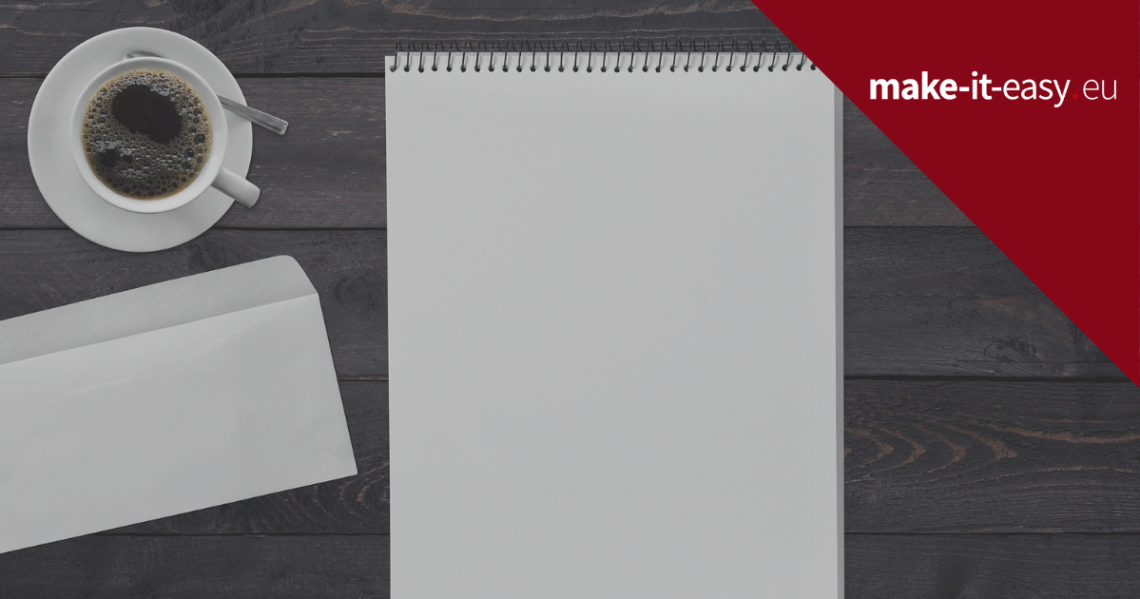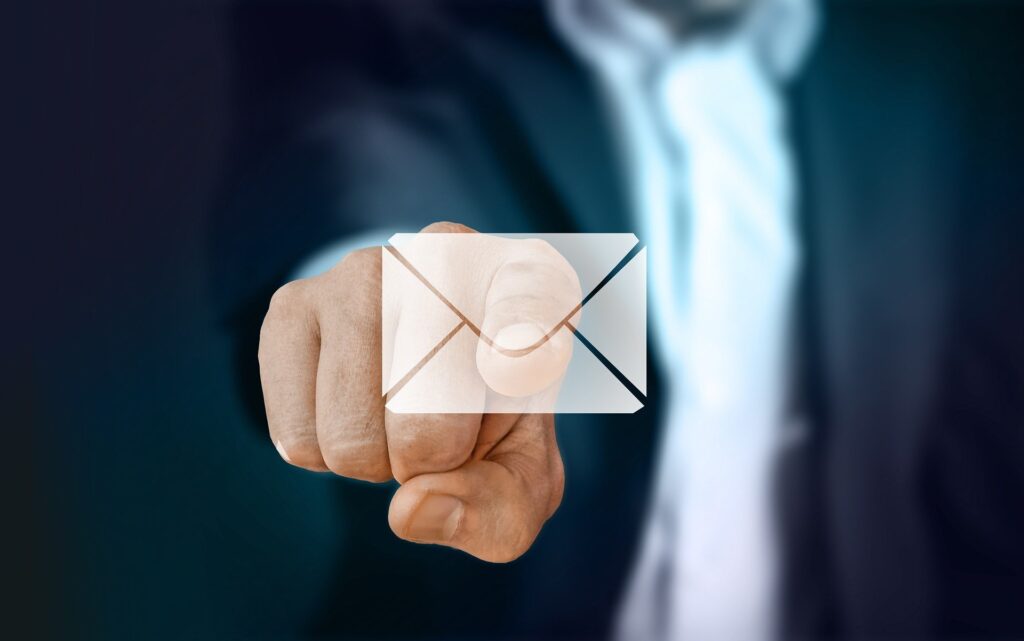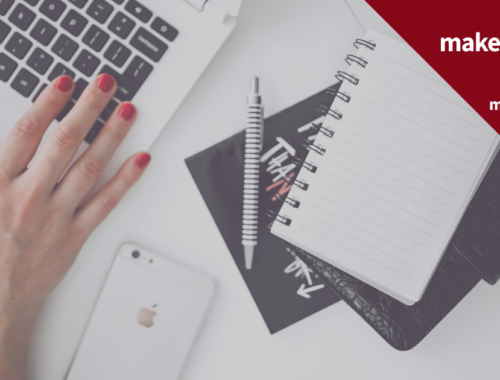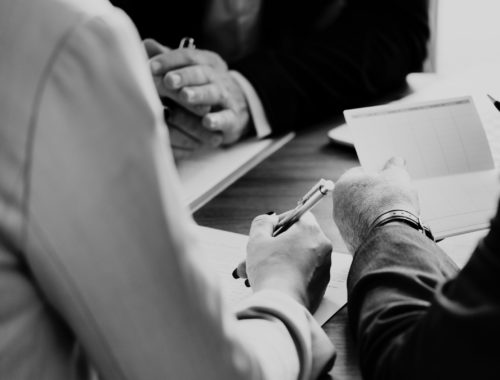
Email is not messenger. Are you using it correctly or is it stealing your time and energy?
Last Updated on October 5, 2020 by Lucie Klabanová
Hasn’t been written enough about e-mails? No!
(For czech version of the post click here.)
Email is not something that has always existed. We can say that it is still a “young man”. It became available to public only in 1996 thanks to one of the first free e-mail services – Hotmail. [Source: Wikipedia] And since then it has undergone a very fast development. Maybe that’s why I have to agree with one member of my facebook group, who, when asked about working with emails, described the situation as follows:
“Only few people really understand how to use them properly.”
Everyone has an email today. In fact, everyone has several. And we always have them with us – on personal computer, mobile phone, tablet.
Many of us now work much more from home, often visit less our relatives and friends in person, and therefore we need to communicate online even much more than before this “weird times“. And I’m increasingly coming across the fact that the ability to use e-mails effectively has perhaps completely disappeared.
So let’s repeat a few points that will help you and others in the proper use.
Email used to be a letter
Let’s remind ourselves that email was created as an alternative to a letter. Its main advantage was the speed of delivery. At the time the email was created, there were none of today‘s fast communication tools, and the fastest form of communication was fax. Letters were sent, in handwritten envelopes with a licking strip to be sealed. (Does it also sound like an ice age to you? :-))
And at this time the email came. You could have sent a letter and it arrived to the recipient within few minutes. It was a real revolution. That’s why this novelty spread incredibly fast.
So now open the last e-mail you sent and evaluate how many requisites of the correct letter it has? Seriously!
- Subject
- Address
- Division into paragraphs
- A description of the whole situation and an explanation of why you are writing it
- Greeting
- Signature
- You do not have to enter the date and return address, the e-mail will do it for you. :-)
Okay, okay, I’m exaggerating a little (intentionally).
But email just isn’t a messenger!

When to write an email
You should use email for more extensive communication that requires written form. Consider whether it is not better to use oral communication and explain everything, for example by phone. Or if another form is not suitable.
You should use a more formal tone when writing emails. Of course, you can adapt it to your relationship with the recipient, but even so, it is still a written communication and it should be a little more formal than oral communication.
Be sure to include all necessary information in the email. If you are describing a situation, a new project, keep in mind that you are writing it for whoever is on the other side. And he doesn’t know what you do. You need to explain him with everything he needs to know in order to receive the message as you expect. In other words, not to interpret the whole thing completely differently.
Be careful of special characters. A lot of exclamation marks are simply not appropriate in e-mail!!!!!!!!! And twelve different smilies won’t add officiality either, will it? 🤦🏽 😅👎🙅🙈 😉
Email is an electronic communication, so the same rules apply to it as for blog articles. Keep the paragraphs short. It is said that a maximum of 5 lines per paragraph is ideal for clarity. Of course, each screen is differently wide, so just follow the feeling where one message ends and another begins.
Use more structures, such as bullets, numbering. This will help you in texts where you would make long paragraphs and write in a classic letter e.g.: “Firstly I would give you… and secondly….” This is how it looks much clearer at first glance:
- …
- …
Read your email once more before sending it. Thoroughly. Is all important information clear for the person concerned to understand the message? Don’t you have unnecessary mistakes or typos there? If it is a more substantial email, I recommend to give it some time – save the email and return to it in an hour and read it again. You will see that something else comes to your mind.
How to work with emails.
Don’t have email notifications turned on. Ideally none. Turn off all notifications, beeps in the mobile phone. And on the computer, too. Every alert pulls you out of what you’re working on in the moment. Interruptions need to be minimized, and email is one of the most common jammers.
Dedicate time to work with emails – to read, sort and then process them. When and how much time you will need is very individual, it depends on you and the specific job. Personally, I had different settings in different positions. I have had a period when it was convenient for me to read emails, for example, only once a day. Now I have a few blocks a day reading them, but I have one block reserved for working with the non-urgent ones, every Friday.
If you succeed and have enough courage to do so (at least try it), turn off the automatic download of emails. In other words, download incoming mail to your computer only manually after clicking on “Download”. You can work with other functions of the email client, such as calendar, etc. But you will not be disturbed by incoming emails.
Use automatic sorting. It is true that we receive a lot of e-mails and many of them are just newsletters or e-mails “for your info”. Use simple filters to direct those who to another folder that does not fill your inbox and does not stress you by the number of unread emails.
Even if you read your emails right away, don’t reply immediately (unless it’s really urgent). This is a method I have tried and can work. But it requires a lot of self-discipline and hell of a concentration.
It works in such a way that you are essentially non-stop on the e-mail, as soon as the e-mail arrives, you fly it over and group it (you can move it to folders) depending on how urgent it is, how long it takes to process it. After that you return to your work. You work with the emails only later in the dedicated time block. But I can say that the ability to return thoughts to the original work after the disruption needed to read the e-mail is really difficult. It doesn’t work at all for deep work. I use it in parts of the day when I work on simpler administrative tasks, and even so it’s not always the best way, because sometimes I get stuck with th new task that just came in by email, instead of the one I worked on earlier.

Don’t expect anyone to respond to your email immediately. If you include deadlines in your email, make sure they’re appropriate. Nothing annoys us as much as a task in an email that has a deadline in an hour. It’s as if the client is saying you have nothing to do.
Address emails correctly. In other words, send them to the person who is responsible for the matter and has the authority to solve it. If you already have to send the e-mail to all parties, carefully separate who is the addressee (TO :) and who receives it for information only (CC :). In a team where you have the opportunity to influence communication flows yourself, set what type of information (emails) anyone should receive. Isn’t there something you can delegate and not receive emails at all? You will see that your mail box will be relieved.
If you require a specific action, write it very specifically. Including what the output should look like and when to deliver it to you. But here we are already at the briefing and assigning tasks, and that is another chapter. (You can look here>>)
Email is only one possibility out of many
Remember that email is just one of the modern forms of communication. Today we are offered countless of them – from messengers, through a classic telephone to videocalls. Think carefully about which form is most suitable for a given situation and use the right one. If you write and receive fewer logical emails, you will have more time and ideas to work. You will also save time and a lot of misunderstandings for yourself and others.
Lucie Klabanová
I am a mentor, leader and pioneer of business process improvement. I help companies and individuals to find effective ways to achieve their goals. More about me you can find here>>
You May Also Like

Work and work again… Is there time for something else?
April 20, 2018
10 tips how to organize your day better
June 18, 2019


One Comment
Pingback: